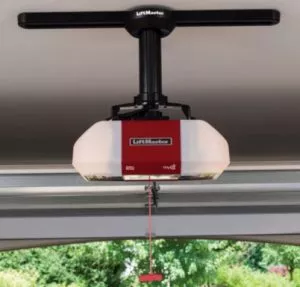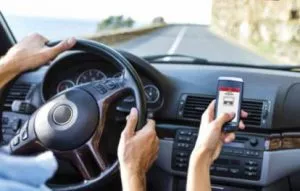
There are so many things we use each day and yet we also have no idea how they operate. From the microwave to the "smart TV", we just could not possibly explain how they work. Garage door openers are the same, and yet we count on them more than we realize. They are often the main way we enter and exit a home, yet what would we do if we pressed the button and they didn’t work? That’s why we offer this brief tutorial in how your door opener works:
What "Type" of opener do you have?
Most of us are not able to explain the type of owner we use. That’s the first step in knowing how they work. The majority of garage door openers in North American are central. This means there is a trolley that pulls the door and that a motor is used to lift the door and operate the system. The system is also placed in the center of the door, and it is here that it gets its name.
Higher ceilings have created the need for door openers that can operate in this sort of space. These are known as Jackshaft openers, and if your garage ceiling is a "cathedral" style, it is likely that you have one of these types of openers.
What type of drive?
In addition to types of opener, there are different types of drives. The most common uses a chain, similar to a bike chain or a blend of metal cable and chain. There is also one type that relies on a rubber belt reinforced with steel, like car tires. This is the type that is far quieter than a full‑blown chain drive. There are also the drives known as screw drives.
What motor strength?
In addition to the mounting type and the sort of drive your opener uses, it also has a specific motor strength. Most are AC‑type (alternating current) door openers, and these come with motor strengths of ½ or ¾ HP. There are also some DC‑type openers. Their strengths and speeds vary – with their operation being unique as the motors start slowly, increase to regular speed, then slow before stopping.
Their strengths (AC and DC) are similar, but DC do not use HP and instead are described in Newtons.
Almost all door openers are designed to lift up to 225 lb. (100 kg.), as well as pushing down the same weight with equal strength. This is why you will hear that a door must be well balanced to be both safe and effective (operationally). What does balanced mean? Essentially, it looks at the spring system on the door. This is a system that works like counterweights against the total weight of the door.
If properly adjusted and calibrated, your door will feel as if it weighs around 8 to 10 lb. (4 to 5 kg) and can be opened or closed with a single hand. If the spring system is not calibrated properly, the door feels much heavier.
What about safety?
In 1993, laws were passed to ensure that all door openers sold in North America use two automatic reversal systems. The first is mechanical and it stops the door from closing if there is any resistance along the bottom, and then reverse direction. The other system relies on photo eyes. This relies on two units installed on either side of the door (around 4-6" from the ground). One sends a beam to the other, which has a mirror that reflects it back. Anything breaking that invisible beam causes the door to immediately reverse direction. Together these systems ensure the doors never close on anything below them.
How does the "clicker" actually open the door?
Most of us have a remote control to operate the door. This devices is a radio transmitter that sends a signal to a receiver that is actually built into the opener mounted inside of the garage. Most remotes send signals on a specific frequency, typically 315, 315 or 390 MHz. This is what the receiver in the motor housing listens for, and when it hears that signal it triggers the door to open or close.
Oddly enough, it is a problem between the receiver and the transmitter that causes a homeowner to call for service. For instance, you click and click the remote or even the button on the door panel and the door refuses to work. There are a few reasons for the malfunction, and they include:
Power outage Dead batteries in the remote Misalignment of photo eyes
These are easily fixed, but many homeowners are unaware that they are an issue. There are also some mythological issues often blamed for a problem with the opener. One is that a plane passing over their house can open the garage door. This is 100% myth! The system works (or not) because of the radio frequency and the wavelengths – all of which are managed and controlled by government agencies, meaning no one can steal the signal and take it over… most of the time.
As we learned, if you have a door opener manufactured before 1993, it uses a technology known as a DIP switch. This relies on controls with 8 positioning clips put into +, 0 or – positions. With this tech, it is still possible that someone can use more modern devices to steal the signal out of the air (only if they are parked or hidden very closely to the home). They can then open the garage door in your absence. But, let’s say the chances are very slim.
After 1993, the primary maker of garage door openers (including Craftsman and LiftMaster) have utilized what is known as the Security+ system that allows up to 1 billion possible codes to cycle during each open/close sequence. Whenever a code is used, it is never repeated for the next cycle.

In 2013 Chamberlain made further refinements in this sort of security and added the MyQ system. This enables mobile operation which ensures you can open and close your garage door from a registered phone, tablet or laptop.
And in August 2017, Chamberlain has incorporated a Wi‑Fi feature to a limited array of door openers, meaning they can be part of a "smart home".
Need to know more?
Contact us with any questions, toll free at 506-450-3031. We are experts in garage doors and openers and can help you make the best choice for your budget and needs. If you’d like, we can email you a quotation.
You can visit our showroom to discuss matters and use our Design Centre to "try on" various styles in a photo of your home. For more inspiration, view the image gallery.

Add new comment